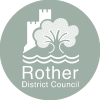Drivers to improve energy efficiency include reducing carbon emissions, reducing fuel bills, improving comfort levels, or to comply with requirements such as Part L of the Building Regs.
Improving the energy efficiency of historic buildings and those of traditional construction means reducing heat losses wherever possible without damaging their special character or compromising their performance.
The two principal areas of risk when upgrading older buildings in the aspiration of reducing energy consumption are:
• causing unacceptable damage to the character and appearance of historic buildings, and
• causing damaging technical conflicts between existing traditional construction and changes to improve energy efficiency.
Works to a listed building to improve energy efficiency may require Listed Building Consent, depending on the extent and nature of the works proposed.
To help guide strategies to improve the energy efficiency of historic buildings without compromising character or technical performance, Historic England have carried out a large number of research programmes focussing on understanding and improving the energy performance of historic buildings and the effects of measures to increase energy efficiency, and they continue to develop this research to underpin their guidance and advice.
Overarching Guidance
An extensive suite of free-to-download guidance notes is available at Energy Efficiency and Historic Buildings | Historic England
Their overarching guidance How to Improve Energy Efficiency sets out their ‘whole building approach’ which considers:
- Context
- Construction
- Condition
- Historic significance
- An understanding of all the factors that affect energy use, and
- How to devise an energy efficiency strategy for any building
Detailed Guidance
Historic England have also produced a more detailed suite of guidance offering practical advice for owners and builders on the principles, risks, materials and methods of installing insulation and draught-proofing of:
- Roofs (including pitched, flat, thatched, dormer windows and flues)
- Walls (including solid and timber-framed)
- Windows and Doors (including draught-proofing, secondary glazing, improving the thermal efficacy of historic sash windows, and the conservation and thermal upgrading of traditional windows)
- Floors (including suspended timber floors and solid ground floors)
Useful advice is also available from the Society for the Protection of Ancient Buildings (SPAB)
Energy Efficiency and the Building Regulations in Historic Buildings
Part L of the Building Regulations seeks to improve the energy efficiency of all buildings. For historic buildings a balance needs to be achieved between improving energy efficiency and avoiding damage both to the significance of the building and its fabric.
The Building Regulations Approved Documents for Part L make it clear that a reasonable compromise on the energy efficiency targets may be acceptable in order to preserve character and appearance and to avoid technical risks. They do this by specifically including some ‘exemptions’ and circumstances where ‘special considerations’ apply for historic buildings and those of traditional construction.
Having regard to the research and wider guidance listed above, Historic England have produced specific guidance to help prevent conflicts between the requirements of Part L of the Building Regulations and the conservation of historic and traditionally constructed buildings.
The advice acts as ‘second tier’ supporting guidance in the interpretation of Approved Documents L1B and L2B that should be taken into account when determining appropriate energy performance standards for works to historic and traditionally constructed buildings.
The following areas are covered in the guidance:
- The background to the legislation and the need to reduce greenhouse gas emissions
- An interpretation of the regulations themselves as applied to historic and traditionally constructed buildings
- Understanding the buildings before carrying out upgrading works
- Meeting the requirements of part L
- Advice on the thermal upgrading of various building elements
Please visit the Part L of the Building Regulations and Historic Buildings Exemption webpage if the work would affect character and appearance. Part 1 does not apply. Building Conservation publishes excellent articles on all aspects of historic building conservation; practical, legislative and theoretical plus information on courses and events nationwide.

